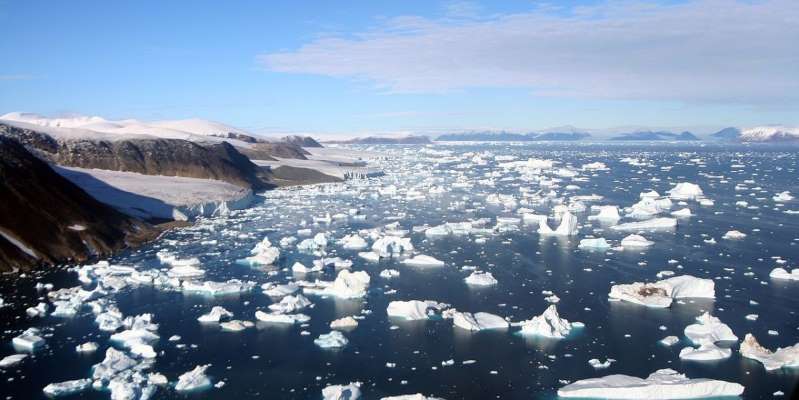The Arctic Ocean was fresh in ancient times
Scientists from the Alfred Wegener Institute for Polar and Marine Research have established that the Arctic Ocean was once a pool of fresh water. From above, it was covered with a massive ice sheet, reports Nature .
At that time, the ice age continued on Earth. The sea level has dropped significantly. The Arctic Ocean has almost lost contact with the Pacific and Atlantic oceans, and Greenland, Iceland, northern Europe and Siberia have turned into the edges of a huge natural “bowl” that bounds the Arctic from all sides. The land and sea were covered with 900 meters of ice, which further limited the circulation of water.
“Glaciers, river outlets and continental runoff trapped fresh water in the isolated Arctic Ocean, while salt water from the Atlantic and Pacific Ocean could not get in,” the study authors explained.
Scientists noted that they first learned about the complete desalination of the Arctic Ocean. Moreover, it happened not once, but at least twice.
The first period of the “freshwater Arctic” happened 150 – 130 thousand years ago, the second – 70 – 60 thousand years ago. These were particularly cold times when the ice sheet extended over 5,000 km from Scotland through Scandinavia to the eastern Kara Sea. Another pair of ice sheets covered much of what is now Canada and Alaska, and the Greenland ice sheet was much more powerful than it is now.
It has been difficult for scientists to study the ancient history of the Arctic Ocean, as floating ice sheets leave far fewer geological footprints than land ice sheets and glaciers. The authors of the new scientific work analyzed sedimentary rocks from the Arctic, the Fram Strait between Greenland and Spitsbergen and the North Sea.
Studies have shown that two layers were distinguished in the cores. Each was missing an isotope called thorium-230. It is formed by the natural decay of uranium in salt water. In marine sediments, the absence of thorium-230 means that there was no salt water there.
“The only reasonable explanation for this pattern is that the Arctic Ocean has been filled with fresh water twice in its young history – both frozen and liquid,” concluded micropaleontologist Jutta Wollenburg.
At that time, the sea level was 130 m lower than today, and some parts of the seabed relief (including parts of the Bering Strait) turned out to be practically land. However, when the ice receded, the Arctic had to return to salt water very quickly, as it is heavier than fresh water. The displaced fresh water probably spilled out into the North Atlantic. This process may explain some of the discrepancies in sea level estimates made by different scientists.
Earlier, experts announced the “dying” of the Arctic Ocean. Most of the sea ice has melted.

